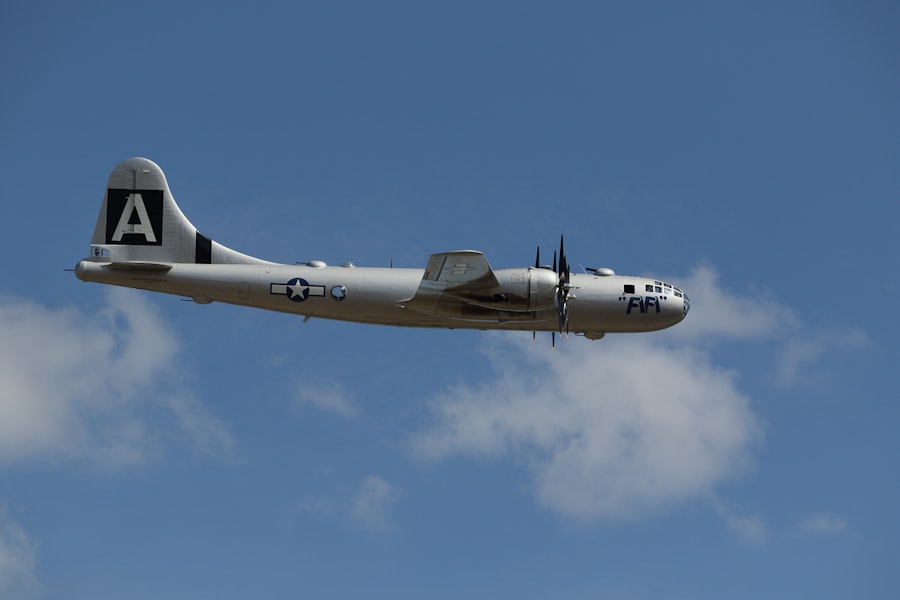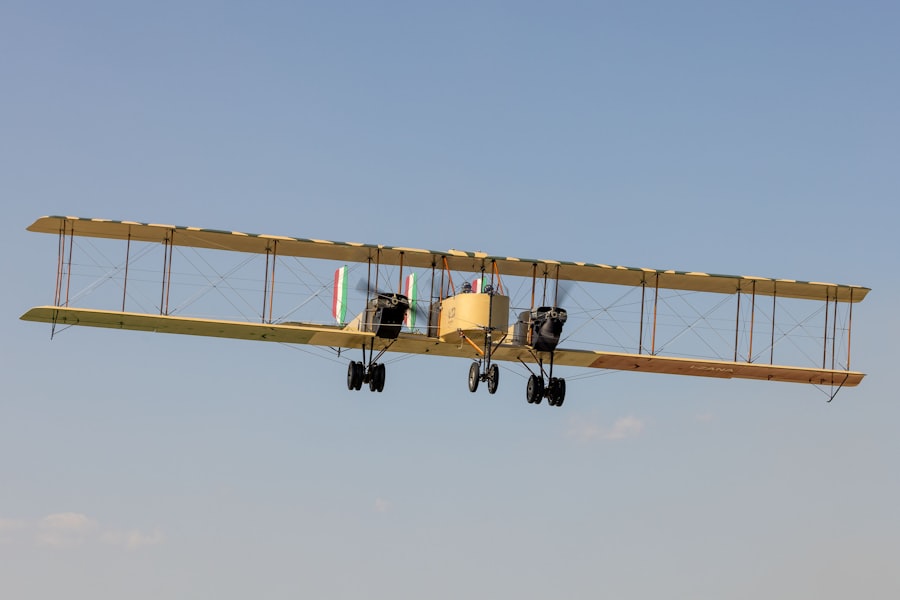The Strategic Air Command (SAC) and the Aerospace Museum are pivotal institutions that encapsulate the rich history of American air power and its evolution over the decades. Established during a time of global conflict and technological advancement, SAC was a key component of the United States’ military strategy, particularly during the Cold War. The Aerospace Museum, located in Omaha, Nebraska, serves as a repository of this history, showcasing the aircraft and technology that have shaped air and space exploration.
Together, they provide a comprehensive narrative of how air power has influenced military strategy and national security. The museum not only honors the legacy of SAC but also serves as an educational platform for visitors of all ages. It houses an impressive collection of aircraft, missiles, and space artifacts that tell the story of human ingenuity in the face of adversity.
By exploring the museum’s exhibits, visitors can gain insights into the technological advancements that have occurred over the years and understand their implications for both military and civilian applications. The Strategic Air Command and Aerospace Museum stands as a testament to the importance of air power in shaping modern warfare and national defense strategies.
Key Takeaways
- The Strategic Air Command and Aerospace Museum is a fascinating destination for those interested in air and space technology and history.
- The museum showcases the evolution of air and space technology, from the early days of flight to modern advancements in aerospace.
- World War II played a significant role in the development of the Strategic Air Command, and the museum highlights this pivotal period in history.
- The Cold War era saw the Strategic Air Command at the forefront of national defense, and the museum explores its role during this tense time.
- The museum not only preserves history but also educates visitors about the important role of the Strategic Air Command in national defense.
The Evolution of Air and Space Technology
The evolution of air and space technology is a fascinating journey that reflects humanity’s relentless pursuit of innovation. From the early days of flight with the Wright brothers to the sophisticated spacecraft that explore distant planets, each advancement has built upon previous knowledge and capabilities. The development of jet engines in the 1940s revolutionized air travel, allowing for faster speeds and greater altitudes.
This technological leap not only transformed commercial aviation but also had profound implications for military operations, enabling faster response times and more effective strategic bombing campaigns. As technology progressed, so did the complexity of aircraft design. The introduction of radar systems during World War II marked a significant turning point in aerial warfare, allowing for improved detection and targeting of enemy aircraft.
The Cold War era saw further advancements with the development of stealth technology, which aimed to reduce an aircraft’s radar signature, making it harder to detect. This innovation was crucial for maintaining air superiority in a time when nuclear deterrence was paramount. The evolution of space technology also played a critical role during this period, with satellite systems enhancing reconnaissance capabilities and communication networks, fundamentally changing how military operations were conducted.
World War II and the Strategic Air Command

World War II was a defining moment for air power, leading to the establishment of the Strategic Air Command in 1946. During the war, air forces were utilized extensively for strategic bombing campaigns aimed at crippling enemy infrastructure and morale. The United States Army Air Forces (USAAF) played a crucial role in this regard, conducting large-scale bombing raids over Germany and Japan.
The effectiveness of these operations demonstrated the importance of air superiority in modern warfare, prompting military leaders to recognize the need for a dedicated command focused on strategic bombing. The lessons learned from World War II laid the groundwork for SAC’s formation. The command was tasked with overseeing the United States’ strategic bombing capabilities during peacetime and ensuring readiness for potential conflicts.
This included not only conventional bombing missions but also the development of nuclear deterrence strategies. The bombers used during World War II, such as the B-17 Flying Fortress and B-29 Superfortress, served as precursors to the more advanced aircraft that would be developed under SAC’s purview, including the B-52 Stratofortress and later models designed for nuclear delivery.
Cold War and the Strategic Air Command
| Metrics | Cold War | Strategic Air Command |
|---|---|---|
| Duration | 1947-1991 | 1946-1992 |
| Key Events | Berlin Airlift, Cuban Missile Crisis | Nuclear deterrence, Cold War operations |
| Role | Political tension between US and USSR | Primary nuclear deterrent force |
| Impact | Global political realignment | Shaped US nuclear strategy |
The Cold War era marked a significant expansion of the Strategic Air Command’s role within U.S. military strategy. As tensions escalated between the United States and the Soviet Union, SAC became a cornerstone of America’s nuclear deterrent strategy.
The command was responsible for maintaining a fleet of bombers capable of delivering nuclear payloads, ensuring that any potential adversary understood the consequences of aggression. This period saw an arms race that included not only bombers but also intercontinental ballistic missiles (ICBMs), which further enhanced the United States’ ability to respond to threats. SAC’s presence was felt globally, with bases established in various strategic locations to ensure rapid deployment capabilities.
The command’s motto, “Peace is our profession,” encapsulated its dual role: to deter conflict through strength while being prepared to engage if necessary. The Cuban Missile Crisis in 1962 exemplified SAC’s critical role during this tense period; its readiness posture was instrumental in averting nuclear war. The command’s ability to project power through its fleet of bombers and missile systems underscored its importance in maintaining national security during one of history’s most precarious times.
The Role of Strategic Air Command in National Defense
The Strategic Air Command played an integral role in shaping U.S. national defense policy throughout its existence. Its primary mission was to deter nuclear conflict through a credible threat of retaliation, which required maintaining a state of constant readiness.
This involved not only having a fleet of bombers on alert but also ensuring that personnel were trained and equipped to respond swiftly to any potential threat. The command’s emphasis on strategic deterrence became a cornerstone of U.S. military doctrine during the Cold War.
In addition to its deterrent capabilities, SAC was also involved in various military operations beyond nuclear deterrence. Its bombers were utilized in conventional warfare scenarios, providing support for ground troops and conducting precision strikes against enemy targets. This versatility demonstrated SAC’s importance not only as a nuclear force but also as a critical component of U.S.
military operations across different theaters of conflict. The command’s ability to adapt to changing geopolitical landscapes ensured that it remained relevant throughout its operational history.
The Aerospace Museum and its Exhibits

The Aerospace Museum serves as a vital institution for preserving and showcasing the history of air power and space exploration. With an extensive collection of aircraft, missiles, and artifacts, it provides visitors with an immersive experience that highlights key developments in aviation technology. Among its most notable exhibits are iconic aircraft such as the B-52 Stratofortress and the B-17 Flying Fortress, which represent significant milestones in military aviation history.
In addition to aircraft displays, the museum features interactive exhibits that engage visitors in understanding the science behind flight and space exploration. For instance, simulators allow guests to experience what it’s like to pilot various aircraft or navigate spacecraft, providing a hands-on learning experience that complements traditional exhibits. The museum also hosts temporary exhibitions that focus on specific themes or events in aviation history, ensuring that there is always something new for visitors to explore.
Educational Programs and Outreach at the Museum
The Aerospace Museum is committed to education and outreach, offering a variety of programs designed to inspire future generations interested in aviation and space exploration. School groups frequently visit the museum for guided tours that align with educational standards, allowing students to learn about aerodynamics, engineering principles, and historical events related to air power. These programs are designed to be interactive and engaging, fostering curiosity among young learners.
In addition to school programs, the museum hosts workshops and special events aimed at families and adults alike. These initiatives often include guest speakers from various fields related to aviation and aerospace, providing insights into careers in these industries. By engaging with experts and participating in hands-on activities, visitors can gain a deeper appreciation for the complexities involved in air travel and space exploration.
Preserving History for Future Generations
Preserving history is one of the core missions of both the Strategic Air Command and Aerospace Museum. As technology continues to evolve at an unprecedented pace, it is essential to document and maintain artifacts that represent significant milestones in aviation history. The museum actively works to acquire new pieces for its collection while also ensuring that existing artifacts are properly conserved for future generations to appreciate.
The importance of preserving this history extends beyond mere nostalgia; it serves as a reminder of past achievements and challenges faced by those who came before us. By maintaining these artifacts and sharing their stories with the public, the museum plays a crucial role in educating visitors about the impact of air power on society and global events. This commitment to preservation ensures that future generations will have access to these important historical narratives, fostering an understanding of how air power has shaped our world today.


